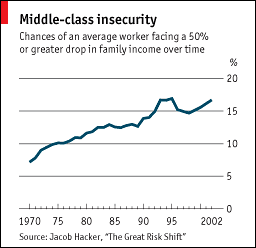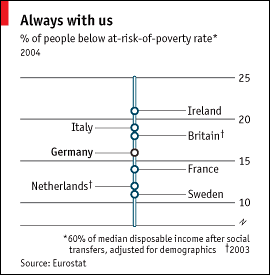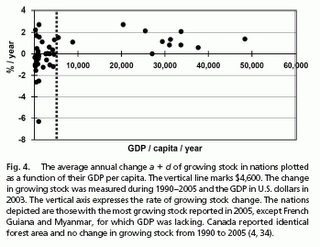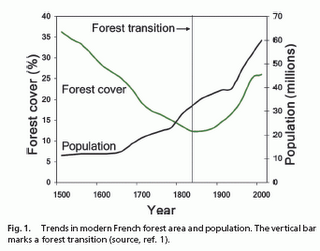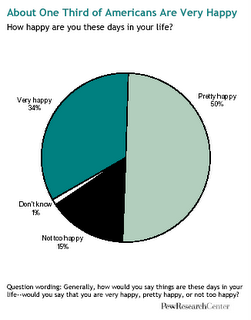I have written previously about my hope for acre and gallons labeling for food to tell how much energy and land it requires to produce various foodstuff. I ran something similar at the LCA Food Database. It collects data using a Life Cycle Assessment method to determine the amount of resources and wastes from soil to kitchen created by different food items. The numbers were collected off of Danish farms, but I would guess the ones in the US would be similar.
The following table shows the amount of CO2 emissions and square meters of land (for one year) used to create 1kg of the food item. I also added the amount of calories per kg of the food and then sorted based on square meters used per calorie.
| item (1kg) | g CO2 | m^2 year | calories | m^2/ 1,000 cal | co2/ cal | cal/ m2 |
| beef steak | 42,400 | 56.0 | 1980 | 28.3 | 21.4 | 35 |
| frozen chicken | 3,650 | 5.0 | 1840 | 2.7 | 2.0 | 368 |
| fresh chicken | 3,160 | 5.0 | 1840 | 2.7 | 1.7 | 368 |
| oats, organic | 594 | 3.3 | 3890 | 0.8 | 0.2 | 1,179 |
| soy beans | 620 | 3.3 | 4160 | 0.8 | 0.1 | 1,261 |
| wheat, organic | 376 | 2.5 | 3420 | 0.7 | 0.1 | 1,368 |
| oat flakes | 790 | 2.5 | 3820 | 0.7 | 0.2 | 1,528 |
| oats, conventional | 580 | 2.3 | 3890 | 0.6 | 0.1 | 1,691 |
| soy/rapeseed oil | 3,630 | 4.5 | 8840 | 0.5 | 0.4 | 1,964 |
| wheat, conventional | 727 | 1.5 | 3420 | 0.4 | 0.2 | 2,280 |
| wheat flour | 1,130 | 1.4 | 3390 | 0.4 | 0.3 | 2,421 |
| frozen wheat bread | 1,200 | 1.0 | 2600 | 0.4 | 0.5 | 2,600 |
| wheat bread | 840 | 1.0 | 2600 | 0.4 | 0.3 | 2,600 |
| potatoes | 184 | 0.3 | 930 | 0.3 | 0.2 | 3,000 |
| potatoes, retail | 161 | 0.3 | 930 | 0.3 | 0.2 | 3,000 |
| sugar | 960 | 0.5 | 4000 | 0.1 | 0.2 | 8,889 |
| sugar beet | 160 | 0.2 |
|
|
|
| rape seeds, organic | 1,320 | 5.7 |
|
|
|
| rape seeds, conventional | 1,550 | 3.5 |
|
|
|
A couple of observations. First, from a land usage/calorie created standpoint, meat comes out as the most intensive and potatoes and sugar comes out as the least. Beef is way higher than everybody else, more than 10 times higher than chicken and 280 times higher than sugar. Substituting chicken for beef decreases your land usage by 90%. While I don't think sugar is particularly healthy, from a resource standpoint, it is very efficient needing much less space per calorie than any grains.
Second, the more processed, the more CO2 is emitted. Eating raw food, therefore emits less CO2 per calorie eaten. You might also think that this would mean it is better to buy raw ingredients and cook at home. Actually though, as this report shows (p9), baking bread in an industrial setting is more energy efficient than everybody baking at home. So unless you are going to eat the food raw, from an energy standpoint better to have it processed for you.
| item (1kg) | g CO2 | m2 year | extra energy | extra land |
| rape seeds, organic | 1,320 | 5.7 |
| 63% |
| rape seeds, conventional | 1,550 | 3.5 | 17% |
|
| wheat, organic | 376 | 2.5 |
| 67% |
| wheat, conventional | 727 | 1.5 | 93% |
|
| oats, organic | 594 | 3.3 |
| 43% |
| oats, conventional | 580 | 2.3 | -2% |
|
Comparing organic with conventional farming, there is a trade off between using more land and using more energy (currently in the form of fossil fuels). Organic oats required 43% more land, rape seeds 62% more and wheat 66% more. On the CO2 side, conventional farming emits 17% more for rape seeds, 93% more for wheat and 2% less (huh?) for oats. I am not sure how to access which is more valuable: extra land for nature or less carbon emissions. But, the idea that organic is better for the environment in all ways does not appear to be true. Hopefully in the future we will have sustainable artificial fertilizer made from renewable energy, so we won't have to make this choice.
Read More...
Summary only...













